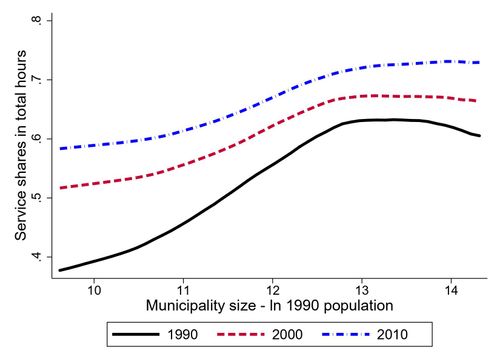Structural Change and Gender Inequality: Trade, Industry Shifts, and Regional Labor Markets in Mexico
Published in Journal of Regional Science, 2025

This paper examines how structural changes in local industry composition have contributed to the reduction of gender gaps in employment hours across Mexican metropolitan zones (MZs) between 1990 and 2010. Using census microdata, I document that smaller MZs—initially specialized in goods-producing sectors such as agriculture and manufacturing—experienced disproportionately larger increases in female-to-male employment hours compared to larger urban areas. These changes coincided with a shift toward service-based employment, which is more intensive in female labor. To identify the causal effect of industry shifts on gender employment gaps, I exploit exogenous variation in regional exposure to trade shocks induced by tariff reductions under the North American Free Trade Agreement (NAFTA) and estimate a smooth-varying coefficient (SVC) model to capture how these effects differ along the population size distribution of MZs. The results show that trade-induced declines in the goods sector’s employment share significantly increase female relative employment hours, with effects concentrated in smaller cities. These findings underscore the importance of regional industrial specialization and labor demand shifts in shaping gender dynamics in local labor markets.
